During SHOT Show, Chris covered the ins-and-outs of Winchester’s new WWII Victory Series Ammo. It appears to be historically-accurate enough to appease gun hipsters and shooters nostalgic for the smell of cordite. I, for one, long for the days when nostalgia wasn’t such a big deal. It was just better then; nostalgia ain’t what it used to be. Anyway . . .
At Industry Day on the Range I shot Winchester’s other two brand new brands of ammo: Super Suppressed and Hybrid-X.
Super Suppressed is exactly what you’d hope: fully-copper-encapsulated, heavy-for-caliber projectiles loaded subsonic on clean-burning powder and primers. It’s optimized for running through a suppressor with the utmost minimum of noise and dirtiness.
It’ll be available in .22 LR, .22 Magnum, 9mm, .45 ACP, 300 Blackout and .308 Winchester (yes, loaded subsonic). The rimfire ammo is “black copper plated” while the rest is jacketed.
On the range I fired the .22 LR and 9mm. It was super freaking quiet.
Of course, there was unsuppressed gunfire in other bays and I had ear pro on (though I do not believe the sound suppression kicked in). Plus I didn’t shoot other brands of ammo back-to-back with Winchester’s Super Suppressed ammunition. So it’s hard to say anything more at this point.
Rest assured that TTAG will get our hands on some of this stuff and test it for sound, accuracy, and next-to-Godly-ness (i.e. cleanliness).
Winchester’s Hybrid-X (seen in the lead photo) is a consumer/civilian-oriented self-defense round. Its large, polymer tip drives down on impact into a jacketed, fragmenting lead core.
It’s supposed to combine penetration, expansion and fragmentation into a single bullet that’s “blind” to clothing and other soft “barriers” that can plug up hollow points.
Hybrid-X should also feed more reliably in more firearms than hollow points, thanks to its FMJ round nose-like shape.
Meanwhile, it appears (unconfirmed as of yet) to limit penetration through harder barriers such as windows and walls and reduce the risk of ricochet.
Again, it’s aimed at civilian self-defense/personal defense/home defense rather than law enforcement and military use.
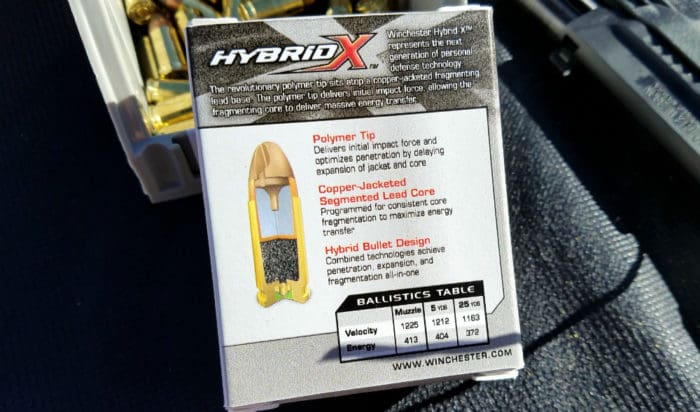
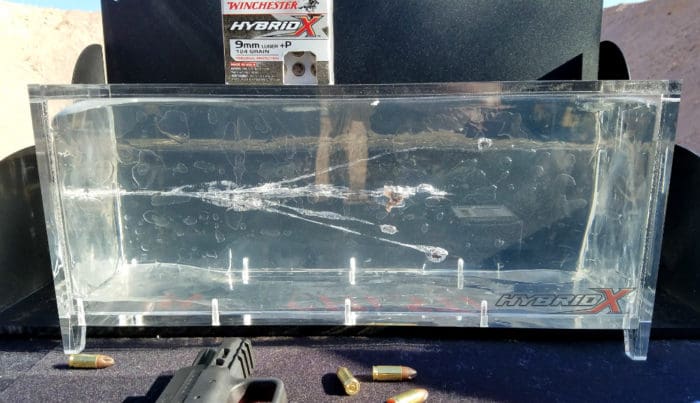

One thing to note, based on the gel block they had on display: the round doesn’t begin to fragment until it has penetrated about five inches of gel.
I’m not convinced that a fragmenting bullet is the best design, but the Hybrid-X is definitely far superior to those that fragment immediately.
Keep in mind that it takes three to four inches of ballistics gel penetration to equate to breaking human skin, so the fragments in other bullet designs that end up parked three inches into gel are unlikely to do much of anything on a bad guy.
With the Hybrid-X round seen in the 16-inch-long block above, the lead fragments appear to have stopped between about 9.5″ and 12″ deep. The polymer tip appears to be sitting in the jacket around the 10-ish-inch mark.
I don’t yet envision this replacing my carry load, but I certainly wouldn’t want to be shot with it. I’d consider it much more seriously if I lived in an apartment complex or elsewhere with significant overpenetration concerns.
At this time Hybrid-X is only available in 124 grain 9mm +P. It shoots just like you’d expect.

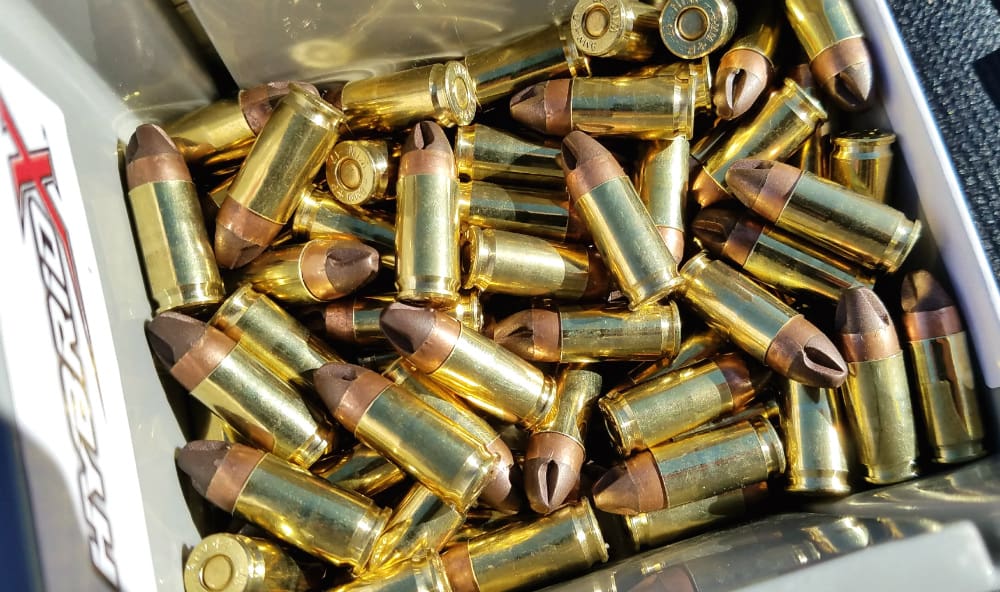
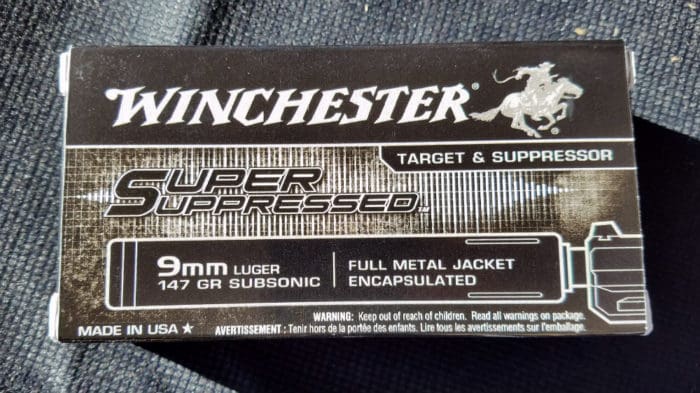

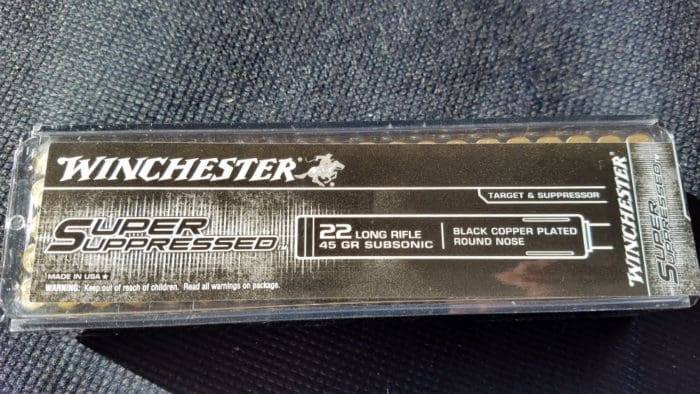
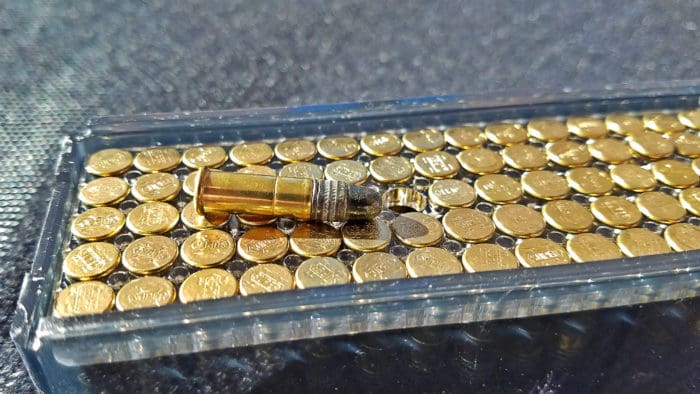
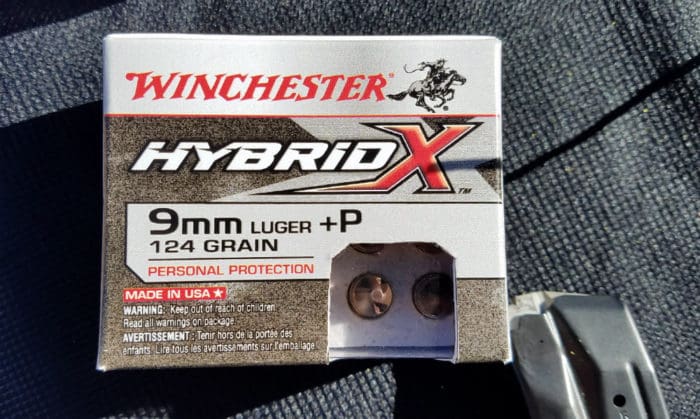


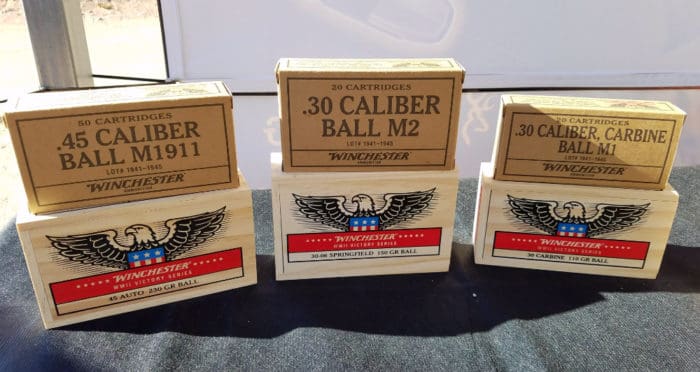

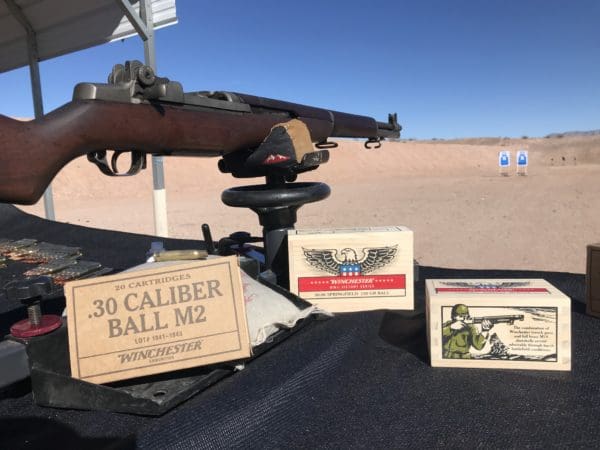



“…and .308 Winchester (yes, loaded subsonic).”
.308 loaded subsonic?
[Singing]
“Reach out, reach out and *touch* something…” 😉
Yeah it’s called 300 Blackout 😉
Actually, the really weird thing is that their 300 BLK is 200 grains but the .308 is 168. Both are loaded to 1,060 fps. Not sure why they didn’t go with the same, heavy projectile for the .308 also.
My guess would be a twist rate issue. Perhaps whatever rifle(s) they were testing it in couldn’t stabilize the longer and heavier bullet at subsonic velocity. Few 308’s have the fast 1:7 or 1:8 that is common among Blackout rifles because it’s unnecessary (and some would say counterproductive) for the normal loadings fired in it.
Is it just me or besides the pictures, is there no reference to the third ammo line in the story?
Check the web link in the first paragraph.
Yeah, it was previously covered by Chris so I didn’t go over it again aside from everything in the intro paragraph.
“With the Hybrid-X round seen in the 16-inch-long block above, the lead fragments appear to have stopped between about 9.5″ and 12″ deep. The polymer tip appears to be sitting in the jacket around the 10-ish-inch mark.”
Mmm… Nope. STB410’s minimum magic number is between 12″ and 14″… in calibrated gelatin, not that clear stuff… looks like a fail.
He himself has tried fragmenting loads before and the fragmentation is the very reason they fail – the projectile sheds weight and mass and thus loses penetration… that ridiculous R.I.P. load the other year was a dud for that very reason.
🤠
Sb410 didn’t determine that 12″ was the minimum penetration necessary, he got the number from the FBI. He was just following their criteria.
That’s boring. Instead of reintroducing the WWII formula for .30 Carbine, how about introducing a good modern defensive load that isn’t $1 per trigger pull. Its a perfect caliber for a PDW, then let Ruger (or anybody good) make a modern platform for it…like that Taurus CT-30 (that Taurus never fully refined).
Did…did you forget the write-up for the 3rd ammo they released?
The entire first paragraph is dedicated to it and Chris’ article on it is hyperlinked there. Sorry for the confusion!
Reminds me. I need to buy more arrows.
That makes two of us. I’ve broken too many training myself to use new archery techniques and my neighbors thankfully haven’t noticed all the new holes in the fence or are too polite to object directly. Having acquired a very large set of arrow targets to use as an oversized backstop I hopefully won’t be losing more expensive arrows to my experiments.
I use the Heritage line by Carbon Express from Three Rivers Archery. They match the natural look of the bows I make while performing better than wood. Lord knows all my arrows would have been turned to splinters long ago if they weren’t graphite.
🤠
I’m a noob. But I’ve already figured out carbon arrows with feather fletching are the way to go.
Normal wear and tear thru practice means new arrows and repairs on older arrows.
.45 s already subsonic more or less,, 22 short quiet as a mouse, 9 mm aint worth a shhht, and Hornaday beat you to polymer tip, so yeah, yay Winchester
when the FBI first came out with this criteria , they said a bullet must do between 10 to 18″ in jello. then they upped it to 12″ to 18″ only because they have to be able to go through winshieds and car doors. so for a us mere mortals 10″ is ok.If we shoot through things we could get in trouble. you know, like hitting someone we did not see on the other side. and in a test, a very, very , long time ago where they shot goats that were compatable to humans in size, mass , and weight, the glaser safety slug was the top performer, having the goats drop dead right after the shot. while ammo has come along way since then, I do wonder about these new frag loads from Winchester. interior walls are very thin, and some apartment walls are also thin, I do not know if the bullet would stop after hitting them. an exterior wall would probably do that though. in case you want to, look up the stasburg test. ( I might have misspelled it).
“Keep in mind that it takes three to four inches of ballistics gel penetration to equate to breaking human skin”
Uh, no. Where the heck did you get that?
That could be slightly hyperbolic but a .177 caliber, 5 grain steel BB will do 3.5″ to 3.75″ of gel penetration. A 113 grain, .38 caliber round nose projectile will not penetrate human skin until about 191 fps but will go a few inches deep in ballistics gel at that velocity. I don’t know if you’ve played with ballistics gel, but you can easily stick a finger right through it. It’s a nice, consistent medium that causes bullets to behave like they do in muscle tissue (particularly useful for testing hollow point expansion), but it isn’t muscle tissue and penetration depth in gelatin is not the same as in living tissue. A lot of people see gel block tests and go “holy crap, why would I want 16″ of penetration, that’s crazy,” but don’t realize that 16″ in gel might be 7″ in human.
Anyway, the estimation of penetration depth in gel necessary to equate to first perforating living human skin is going to vary significantly depending on projectile shape, mass, and velocity. But for the folks who look at “trocars” and other small frangible petals that come off immediately and stop like 3″ into ballistics gel, just keep in mind that 3″ in gel is NOT 3″ in mammal, and a BB does 3.5″ in gel.
Thank-you that was informative. Looking at it like an FNG, Someone could visit this site and learn some stuff
4″ is a good rule of thumb for skin, but only on the exit side of the wound channel. The entrance skin is backed by meat. So the elastic skin can’t stretch and gets perferated. The exit side stretches away from the meat, unless held in place by tight clothes like a collar. As a model, try pushing you finger through plastic wrap held in the air vs. sitting on hamburger. In the real world, this is why hunters will find the bullets just under the skin on the opposite side of the animal — the skin stretched out, the bullet didn’t penetrate, and it snapped back into place.
They need a .303, 54R, .38 Special, .45 Colt, 7.62×25, .455 Webley, and 9×19 for the Victory Series. I would add the .38-200, but that’s too much of a hipster cartridge.
303 British as well
Anyone produce 38 200?
Winchester makes a 145gr .38 S&W loading, as does Prvi. Google also tells me “Old Western Scrounger” and “Matt’s Bullets” load actual 200gr .38 S&W, but it’s 70 cents a pop for LRN.
As for the WWII style ammo… There’s plenty of companies that make Garand food with the original spec already, so that’s not really much of interest. More sources of full-brass shells is nice though.
I’m just surprised they use a USP on their box for their 9mm Super Suppressed.
Hope that they are paying a royalty to Polycase for the design of that tip on the Hybrid X.
I’m certainly no expert nor an authority on this topic, but the polymer portion of this round doesn’t appear to be of the same configuration as that of the Polycase round; not to mention that I believe the Polycase is not backed by fragmenting lead. This also brings up the subject of the polymer’s specific composition. I would think that for royalties to become an issue the make-up of the polymer AND an identical, or very nearly identical, design/configuration must be met. But what do I know? I’m not a patent attorney. I’m just using my logic and (what I consider to be) common sense.
You can have a design patent (and/or a trademark) related solely to the aesthetic appearance of something. It would be relatively common to do a utility patent for engineering aspects of a novel invention and also protect the look of something through a design patent: https://en.wikipedia.org/wiki/Design_patent
Polycase does have patents around their projectiles: http://patft.uspto.gov/netacgi/nph-Parser?Sect1=PTO2&Sect2=HITOFF&p=1&u=%2Fnetahtml%2FPTO%2Fsearch-bool.html&r=1&f=G&l=50&co1=AND&d=PTXT&s1=polycase&OS=polycase&RS=polycase and http://patft.uspto.gov/netacgi/nph-Parser?Sect1=PTO2&Sect2=HITOFF&p=1&u=%2Fnetahtml%2FPTO%2Fsearch-bool.html&r=3&f=G&l=50&co1=AND&d=PTXT&s1=polycase&OS=polycase&RS=polycase
It’s absolutely possible Winchester is paying a licensing fee, Polycase is manufacturing the polymer part of the projectiles for them, or Winchester believes they’re not in violation of any patents. I’m sure the companies involved have it under control 😉
Dick Smith still involved with Winchester?